Have you ever faced the vexing problem of fastening parts together only to find that your bolts have become completely stuck? It’s an all-too-familiar situation, and it can seem like there is no solution. There is hope for your seized bolts with no head thanks to this simple secret remedy! This blog post will provide you with the tips and tricks you need to successfully remove a stuck bolt with no head. So, read on to find out all the details – your seized bolts don’t stand a chance!
Why can a bolt be broken?
A bolt can be broken because of excessive force being applied to it, either through direct mechanical force or through the application of an external heat source. This force can cause the metal to become brittle and crack, resulting in a broken bolt.
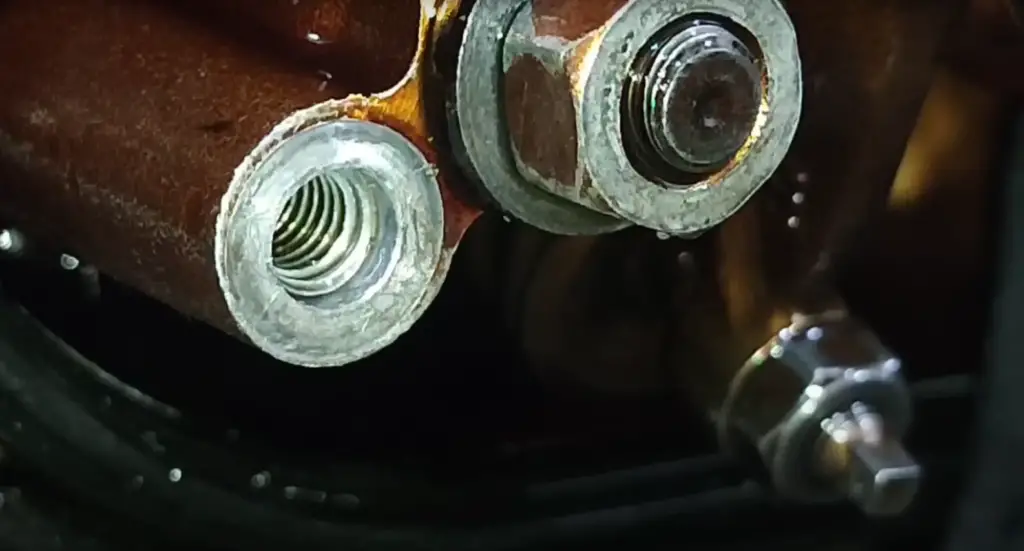
Other causes include corrosion from exposure to moisture, vibration due to high-speed machinery operation, fatigue due to frequent use, or extreme temperatures causing thermal expansion and contraction.
In some cases, bolts may also break due to poor manufacturing quality or material defects. Whatever the cause, any broken bolt should be replaced with one that meets all necessary specifications.
To prevent bolts from breaking in the first place, it is important to ensure that they are not over-tightened and that regular maintenance checks are carried out. It may also be necessary to use a lubricant on threads or a protective coating to guard against corrosion. In addition, all bolts should be inspected before use and replaced if they show any signs of wear or damage. With proper care and preventive measures, broken bolts can usually be avoided.
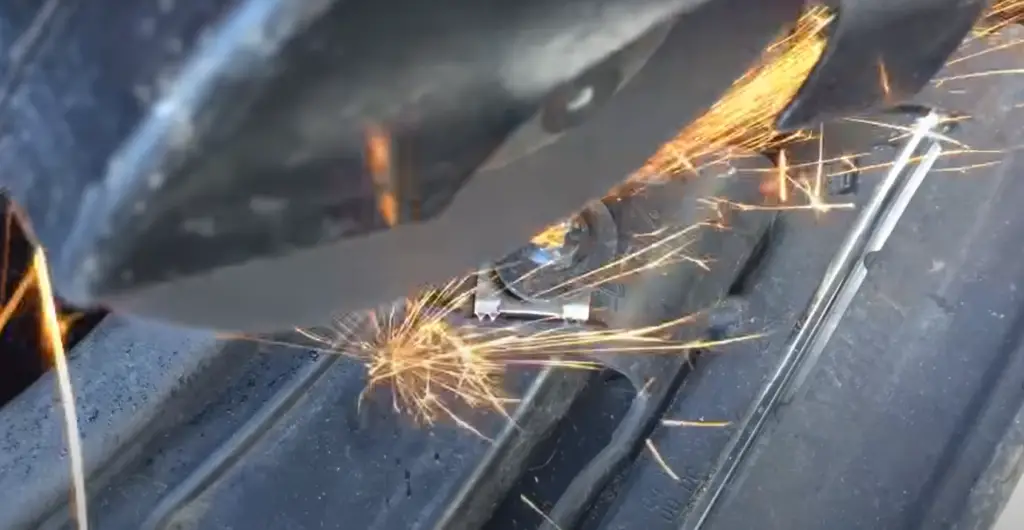
How To Remove A Seized Bolt With No Head
Step 1: Find out a problem with the bolt
Sometimes a bolt can become stuck or “seized” due to rust, corrosion, dirt, oil buildup, or other causes. If the head of the bolt is missing or damaged, you’ll need to use special tools to remove it.
Step 2: Choose The Right Tools For The Job
To safely and effectively remove a seized bolt with no head, you will need an impact wrench and some specialty bits for the job.
The impact wrench is necessary as it will provide enough power to break the bonds between the metal surfaces of the bolt and whatever material they may be stuck into. Specialty bits are also needed as they are designed specifically for removing bolts without heads by boring into the surrounding material and gripping the sides of the bolt.
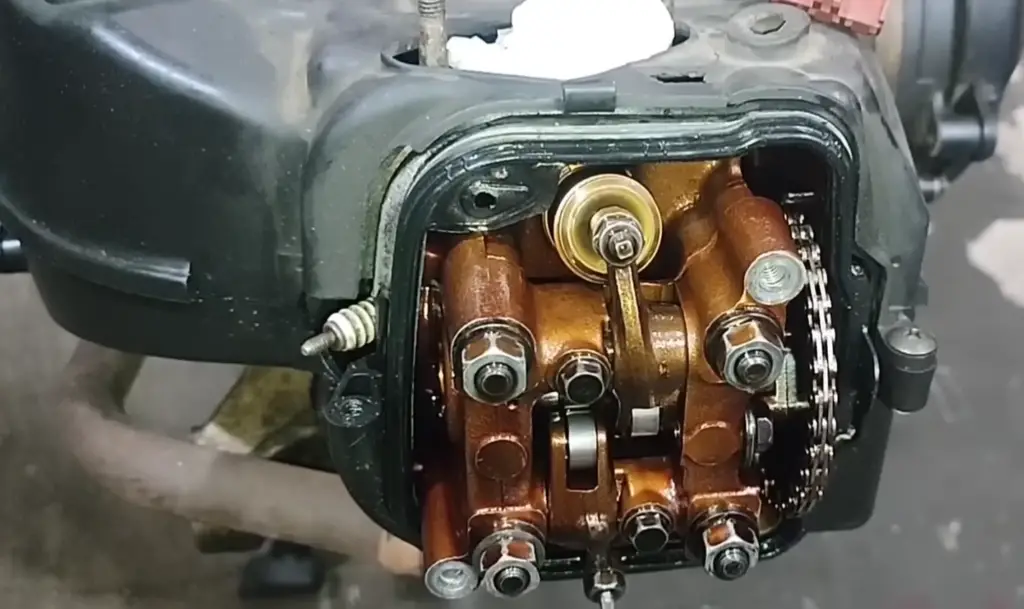
Step 3: Remove the rust on the bolt
Before using the impact wrench, you must first remove any rust or corrosion from the bolt. This can be done with an abrasive wheel such as a wire brush or sandpaper. Make sure to wear protective gear while doing this as sharp particles can fly off and cause injury.
Step 4: Use the Impact Wrench and Specialty Bits
Once the rust has been removed from the bolt, you can then use your impact wrench and specialty bits to safely remove it from its location.
Start by attaching your chosen bit to the end of the impact wrench and slowly squeezing the trigger until you feel resistance, which indicates that the bolts are beginning to loosen.
Step 5: Keep Applying Pressure Until the Bolt Is Removed
Continue applying pressure to the bolt until it is completely removed and set aside for disposal or recycling. If you encounter any difficulties during this process, stop immediately and contact a professional for assistance.
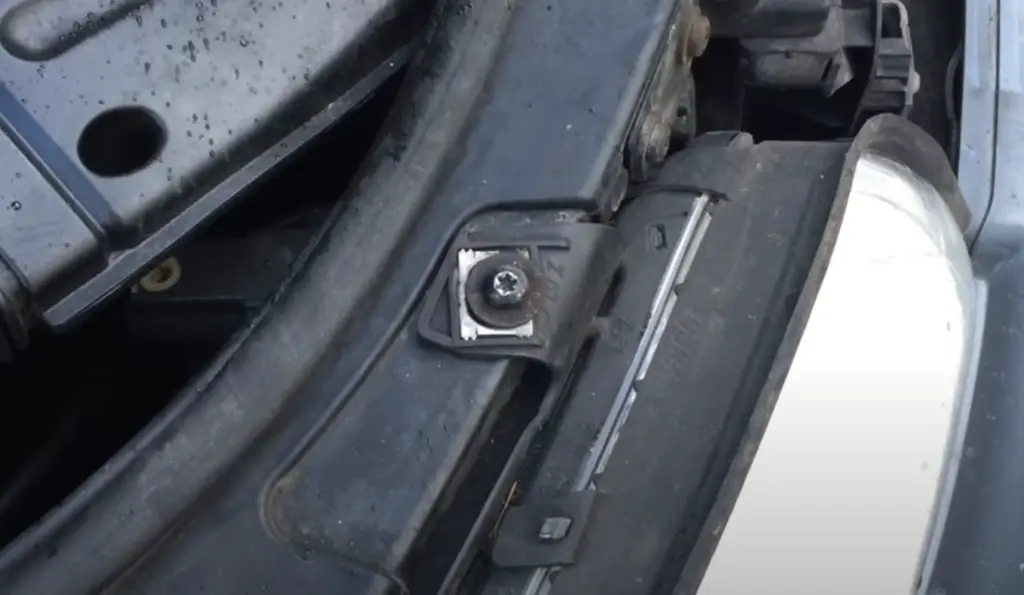
Step 6: Clean Up The Area
Once the bolt has been successfully removed, clean up the area around where it was located with a shop vacuum. This will help remove any debris that may have been produced by the process and keep your workspace safe and clean.
Step 7: As a lubricant, use paraffin wax
You may also choose to apply a thin layer of paraffin wax over the area where the bolt was located. This will act as a lubricant and help reduce any chances of future seizing due to rust or corrosion [1].
Quickest Methods to Remove A Seized Bolt With No Head
Blunt Impact/Force
The most straightforward way to remove a seized bolt with no head is to use blunt impact or force. This method can be used if the bolt has started to become loose but is still stuck in place. One of the easiest ways to apply blunt impact or force is by using a hammer and chisel. If you have access to an air compressor, you may also use an impact gun or wrench. Simply attach the bit of your choice onto the end of the air tool and then strike it against the top of the bolt repeatedly until it starts to break free.
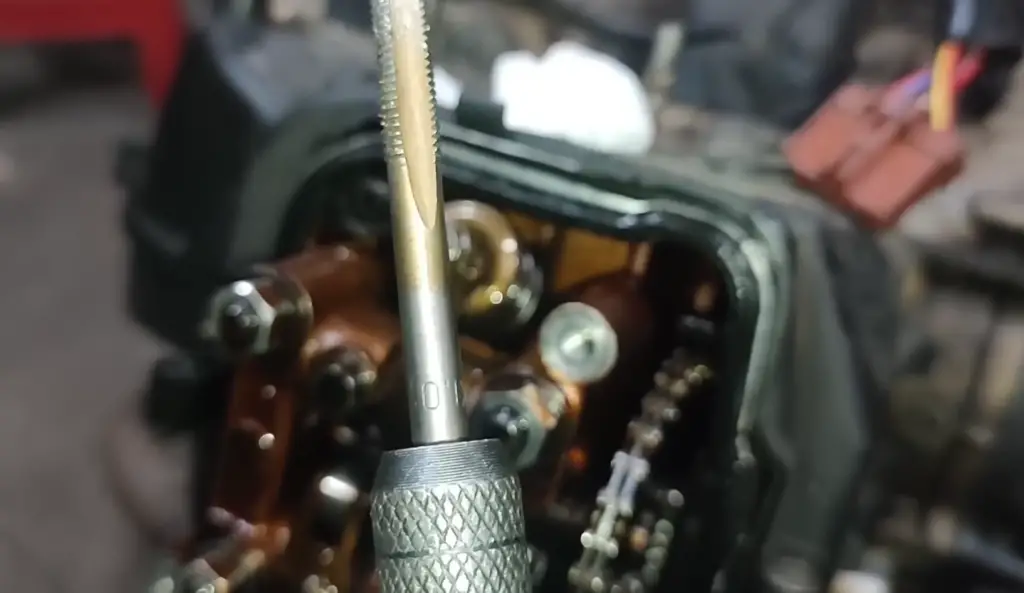
Cutting Tools
If all else fails, cutting tools may be necessary to get rid of a stubborn bolt with no head. Cutting tools such as hacksaws, reciprocating saws, and angle grinders can be used to cut away the bolt. However, it’s important to make sure that you are wearing proper safety equipment such as eye protection and gloves when using these tools. When cutting off a seized bolt with no head, make sure that you leave some of the material around it so that you can still thread in a new bolt after removal.
Chemicals
In some cases, chemicals can be used to help loosen a stuck bolt with no head. Penetrating oils, rust removers, and other chemical solutions may help penetrate the threads of the stuck bolt, allowing it to be removed more easily. It’s important to use caution when applying any kind of chemical solution as they can erode or corrode the surrounding metal if not used properly. If you decide to use this method, make sure that you thoroughly rinse and dry the area after removing the seized bolt with no head.
Heating
Another method for removing a seized bolt with no head is to heat it up. By heating up the bolt, you can cause it to expand, which will help loosen its grip on the threads and make it easier to remove. However, be sure to use caution when using this method as too much heat can damage the surrounding metal or even melt plastic components. The best way to heat up a stuck bolt is with a propane torch. Make sure that you don’t apply the flame directly to the bolt, but rather to the area around it so as not to overheat or damage it.
Drill A Hole in the Seized Bolt
If all else fails, you may have to resort to drilling a hole in the seized bolt with no head. This method is not recommended for larger bolts as it can weaken them and make them more difficult to remove. However, if your stuck bolt is small enough, drilling a hole in it may be the quickest way to get rid of it. To do this, use a drill bit that is slightly smaller than the diameter of the bolt’s threads and carefully drill a hole into it until the bolt comes loose. Be sure to wear safety glasses when using any kind of power tool on a seized bolt.
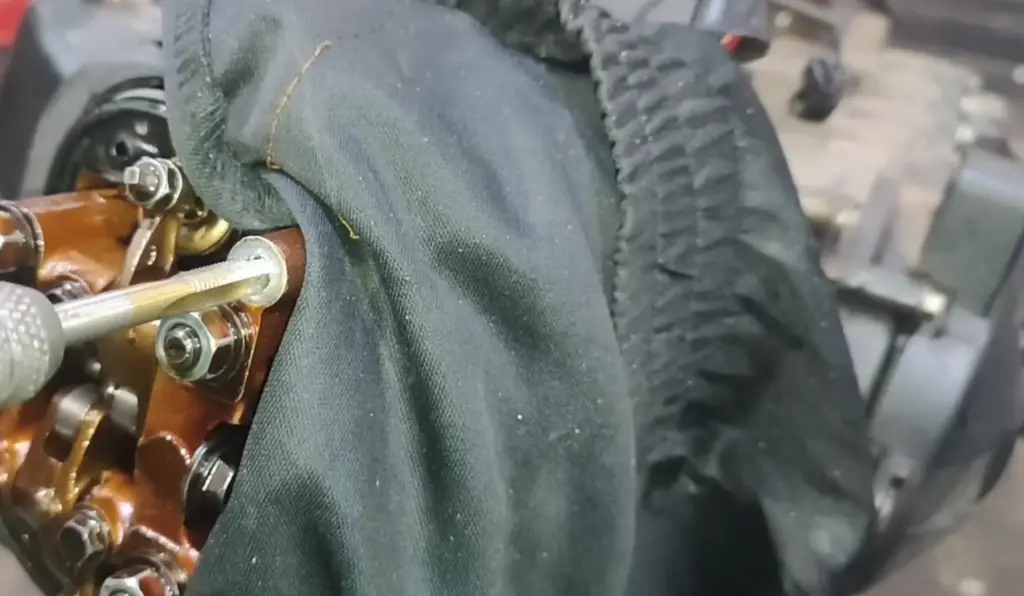
Rock the Bolt
This method is best used in conjunction with the heat or cutting methods mentioned above. Before you begin to apply any kind of force or use a cutting tool, try rocking the stuck bolt back and forth by hand. This can help loosen its grip on the threads and make it easier to remove without having to resort to more drastic measures. Simply grab hold of the bolt with an adjustable wrench and gently rock it back and forth until it starts moving freely.
Using a Bolt Extractor
If none of the above methods work, you may have to resort to using a bolt extractor. This is a special tool that can be used to grip onto stripped or damaged bolts and remove them by applying torque. Bolt extractors come in various sizes so make sure you get one that is appropriate for the size of your stuck bolt. Additionally, these tools require patience and care when being used as too much force can permanently damage the threads of the bolt.
Weld it together
If your stuck bolt is made of two different materials, you can try welding them together. This method works best for bolts that have been corroded or rusted and are impossible to remove by any other means. Simply grab hold of the two pieces with a pair of pliers and weld them together using a welding torch. Once they are fused, they should be easy to break free from their stuck state.
Chisel And Air Hammer
If you don’t have access to a welding torch, another option is to use a chisel and an air hammer. This method works by striking the top of the seized bolt with the chisel while simultaneously applying air pressure from an air hammer. The combined force should be enough to break the bolt free without damaging any of the surrounding metal [2].
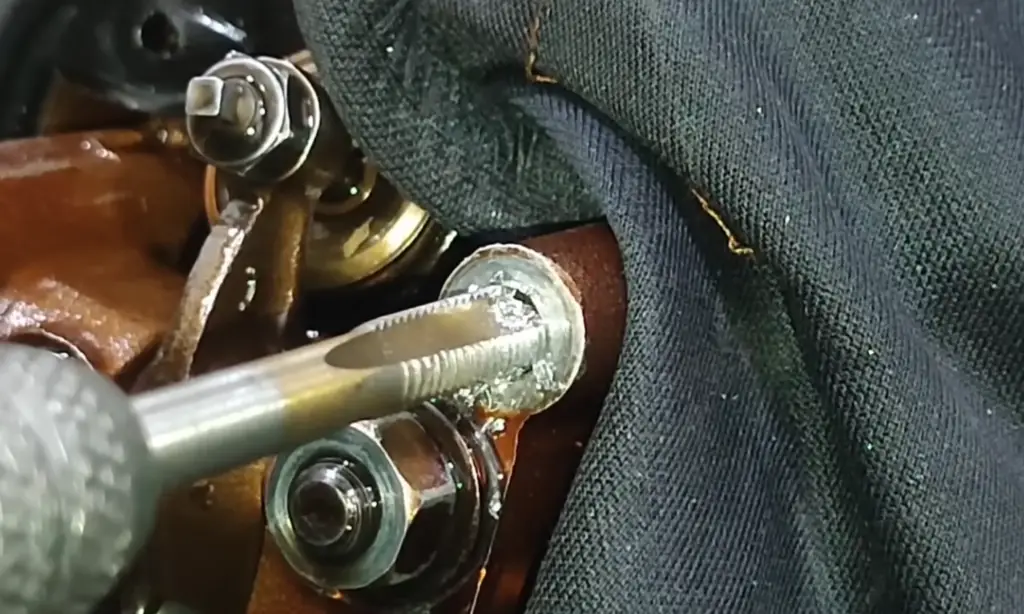
FAQ
How do you remove a stuck bolt without a head?
If you have a stuck bolt without a head, the best way to remove it is by using an adjustable wrench. If you don’t have an adjustable wrench, then you can use pliers or vice grips. You will need to unscrew the bolt while applying pressure with your tool of choice. Use a firm grip and start turning counterclockwise until it becomes loose enough that it can be removed with your hands. If that doesn’t work, then you should try using penetrating oil or lubricant on the bolt which can help loosen it up and make removal easier. If all else fails, you may need to drill into the bolt to break the head off so that it can be removed easier with other tools such as screwdrivers. Whatever method you choose, be sure to use caution when attempting to remove stuck bolts as they can be dangerous if not done properly.
How do you remove a bolt with no head from metal?
If you have a bolt with no head-on metal, the best way to remove it is by drilling it out. You can use an ordinary drill bit that is slightly larger than the diameter of the bolt and carefully drill into it until you reach the threads. Once you’ve drilled all the way through, simply pull out the remains of the bolt with pliers or a pair of needle-nose pliers. Be sure to go slowly and be cautious when drilling so that you don’t damage any surrounding material.
What tools do you need to remove a bolt?
The tools that you’ll need to remove a bolt depend on the type of bolt and its head size. Generally, you’ll need an adjustable wrench, pliers or vice grips, a drill bit, and lubricant or penetrating oil. If the bolt has a hex head, then you can use an Allen key or socket set instead of an adjustable wrench. You may also need additional tools depending on the situation such as a hammer for stuck bolts or special screwdrivers for stripped bolts. Be sure to double-check the head size before using any tool so that it fits properly into the nut.
How do I tighten a loose bolt?
To tighten a loose bolt, start by cleaning off any dirt or debris from the bolt and threads. Then, use an adjustable wrench to hold the nut in place while you tighten the bolt with a screwdriver. Make sure that you are using enough pressure to securely fasten the connection without over-tightening it. If your screwdriver doesn’t fit properly into the head of the bolt then either try another one or use a socket set instead. Finally, lubricate the threads with oil or grease before assembling them for longer life and smoother operation.
How do I know if my bolt is too tight?
If your bolt is too tight, you will notice that it will be difficult to turn or unscrew it even with a tool such as an adjustable wrench. You may also find that the bolt won’t move at all when you apply pressure. To determine if your bolt is too tight, try using a torque wrench to measure the amount of force being applied to it. This will help you understand whether or not your bolt has been over-tightened and needs to be loosened before use. If your torque wrench reads above the recommended maximum then you should loosen the bolt until it falls within the proper range.
What is the best way to remove a rusted bolt?
The best way to remove a rusted bolt is by first soaking it in penetrating oil or lubricant overnight which can help loosen up its grip on whatever it is attached to. Then, use an adjustable wrench or socket set to try and loosen the bolt. If that doesn’t work, then you may need to use a drill bit or power saw to break off the head of the bolt so that it can be removed easier.
Finally, use pliers or needle-nose pliers to pull out the remains of the bolt once it has been broken off.
What type of wrench should I use for a stuck bolt?
The best type of wrench to use for a stuck bolt is an adjustable wrench as its jaw can be adjusted to fit different sizes and types of bolts and nuts. You will also need some lubricant such as penetrating oil or WD-40 to help loosen the bolt before attempting to turn it with your wrench. If the head of the bolt is too small for an adjustable wrench then you should use a socket set instead. Be sure to always go slowly and carefully when trying to remove stuck bolts as they can be dangerous if not done properly.
Can I use a hammer on a bolt?
You can use a hammer on a bolt, but only as a last resort if all other methods have failed. Hammering directly onto a bolt or nut can damage its threads so you must take extra caution when doing this. Try using penetrating oil or lubricant first and then gently tapping the head of the bolt with your hammer until it loosens up enough that you can turn it with your tools. Be sure to go slowly and be cautious when using a hammer as you don’t want to damage any surrounding material or the bolt itself.
What is the difference between a screw and a bolt?
The main difference between screws and bolts is that screws have threads on their entire length while bolts only have threads at one end. Screws are used to fasten two pieces of material together by being inserted into pre-drilled holes, whereas bolts are typically used in conjunction with nuts and washers to secure materials together more firmly than just screws alone. Additionally, screws tend to be smaller in size than bolts, which makes them better suited for applications requiring more precision.
How do you remove a broken bolt without an extractor?
If you don’t have an extractor, the best way to remove a broken bolt is by drilling into it until you reach its threads. You can use an ordinary drill bit that is slightly larger than the diameter of the bolt and carefully drill until you reach the threads. Once you’ve drilled all the way through, simply pull out the remains of the bolt with pliers or a pair of needle-nose pliers. Be sure to go slowly and be cautious when drilling so that you don’t damage any surrounding material. If your bolt has been in place for a long time, then you may need to apply some lubricant or penetrating oil first to help loosen it up before attempting to drill it.
How do you remove a bolt with a rounded head?
A rounded bolt head can be difficult to remove as you won’t be able to fit a tool into the head properly. If possible, try using an adjustable wrench or socket set and applying pressure slowly until it loosens up enough that you can turn it by hand. If this doesn’t work, then you may need to use a drill bit to break off the head of the bolt so that you can use pliers or needle-nose pliers to pull out the remains of the bolt. Be sure to go slowly and cautiously when drilling so that you don’t damage any surrounding material. Additionally, lubricate the threads with oil or grease before attempting to remove them for longer life and smoother operation.
How to remove a broken bolt in a tight space?
Removing a broken bolt in a tight space can be tricky, but you can use a few different methods to do it. Start by lubricating the bolt with penetrating oil or WD-40 and then try using an adjustable wrench or socket set to try and loosen it up. If that doesn’t work, then you may need to use a drill bit to break off the head of the bolt so that you can use pliers or needle-nose pliers to pull out the remains of the bolt. Be sure to go slowly and cautiously when drilling so that you don’t damage any surrounding material. Additionally, consider using longer tools such as an extension bar which may help reach bolts in tight spaces more easily.
How to remove a broken bolt without an extractor?
If you don’t have an extractor, the best way to remove a broken bolt is by soaking it in penetrating oil or lubricant overnight which can help loosen up its grip on whatever it is attached to. Then, use an adjustable wrench or socket set to try and loosen the bolt. If that doesn’t work, then you may need to use a drill bit or power saw to break off the head of the bolt so that it can be removed easier. Be sure to go slowly and cautiously while drilling so that you don’t damage any surrounding material. Finally, use pliers or needle-nose pliers to pull out the remains of the bolt once it has been broken off.
How to remove a broken bolt from an engine block?
Removing a broken bolt from an engine block requires patience and caution as you don’t want to damage any surrounding material. Start by soaking the bolt in penetrating oil or lubricant overnight which can help loosen up its grip on whatever it is attached to. Then, use an adjustable wrench or socket set to try and loosen the bolt. If that doesn’t work, then you may need to use a drill bit or power saw to break off the head of the bolt so that it can be removed easier. Be sure to go slowly and cautiously while drilling so that you don’t damage any surrounding material.
Useful Video: HOW TO REMOVE STRIPPED TORX BOLT OR ANY BOLT IN 5 MINS
Conclusion
Removing a seized bolt with no head is a difficult task. However, with the right tools and techniques, it can be done successfully. With some patience and practice, you can easily remove this stubborn bolt and continue on with your project. An array of products such as nut splitters, easy-out sets, and vice grips are available to make this job easier for you. Additionally, there are several methods you can use to break the bond between the bolt and its housing such as using heat or chemical lubricants. When all else fails, specialized machine shops can also help remove these stuck bolts. All in all, removing seized bolts without heads requires the correct approach and tools but it is possible with some dedication!
References
- https://drillvilla.com/how-to-remove-a-seized-bolt-with-no-head/
- https://www.capische.com/how-to-remove-a-seized-bolt-with-no-head/






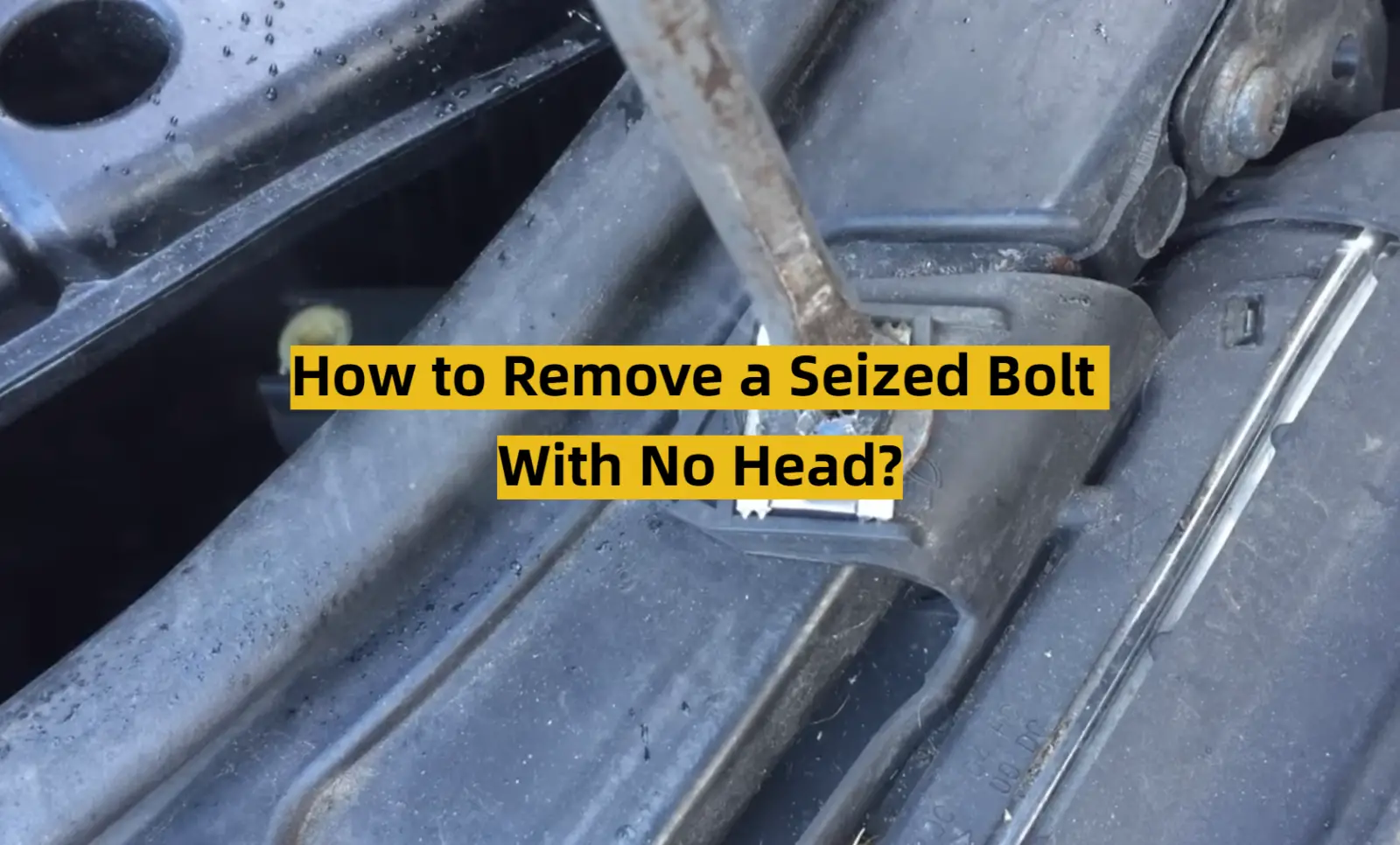




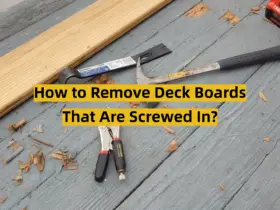
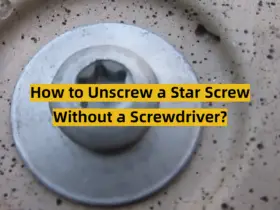
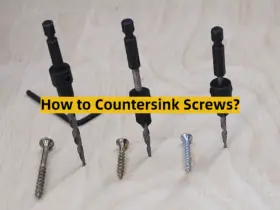
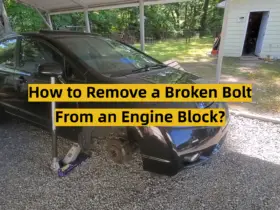
Leave a Reply